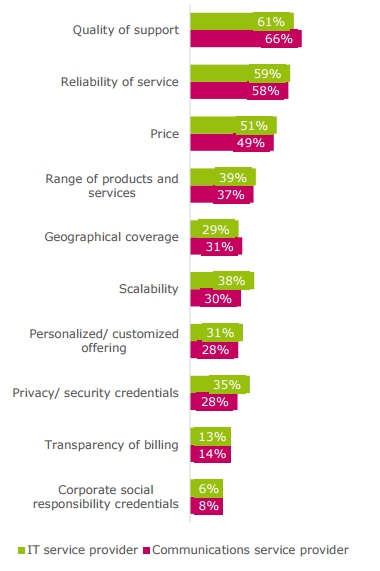5 Keys to an Agile Transformation for Success in B2B
Pipeline has interviewed sales staff from large telcos that still use spreadsheets and individual Salesforce accounts to manage the ordering process for business accounts. This type of process is doomed to fail, and produces high levels of order fallout, protracted service deployment timelines, no customization process, and little to no repeatability. Business customers need customer-centric systems that allow the buyer to engage in any channel they prefer. They also require a high degree of visibility and insight through those channels into all the orders and service requests.
It’s not enough to cobble together price points and service offerings from spreadsheets and fragmented systems. A recent Vanson Bourne study on enterprise ICT spending revealed that 70 percent of respondents indicate the quality of the proposal they receive from a prospective CSP is one of the most important considerations in their decision-making process.
Further, the quality of support provided to business customers ranks even higher than reliability or price, as you can see below in Figure 1, taken from the Vanson Bourne study.

Figure1.Source:Vanson Bourne
2. Increase sales and fulfillment velocity
Businesses today move faster than ever, and they can’t wait around for a VPN order to be fulfilled on typical telco timelines. Take a ride-sharing business, for example, that spins up hundreds, if not thousands, of new global phone numbers each day for use by its partner drivers. Or consider a marketing firm that is opening new offices in ten countries, simultaneously. This is a challenge that most legacy's CSPs would be hard pressed to meet.
CSPs are often characterized by fragmented systems and disparate silos, which severely impacts velocity. One service provider Pipeline has interviewed has separate order management systems for mobile, DSL, VPN, and collaboration services. For this service provider, the same silos exist on the support side as well.



















